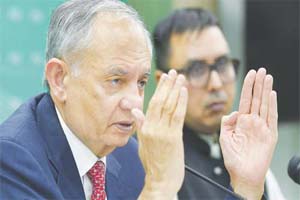
Nine export sectors post double-digit growth in December
Nine export-oriented sectors, including value-added textiles, posted double-digit growth in December compared to the same month a year ago, the data compiled by the Ministry of Commerce showed. Growth in the value-added sectors contributed to an increase in overall exports from the sectors. Highest-ever depreciation of the rupee against the dollar and greater demand from the international market are reasons behind this growth. The upward trend was seen for the past few consecutive months. In December, the total export proceeds from the country went up by 16.7 per cent to $2.761 billion from $2.366bn over the same period last year. Exports of men’s garments products were up by 26pc to $459 million in December against $363m over the last year, followed by a 17pc increase in cotton fabric to $189m against $161m last year. An increase of 55pc in jerseys and cardigans exports to $80m was noted against $52m over the corresponding month last year. Exports of women’s garments increased by 13pc to $84m in December against $74m over the corresponding month of last year, followed by 46pc hike in export of T-shirts to $66m against $45m over the last year and a rise of 11pc in cotton yarn to $107m against $96m. According to the data, the United States, China, the United Arab Emirates and the Netherlands remained the top destinations of Pakistan’s exports in November from a year ago.
|
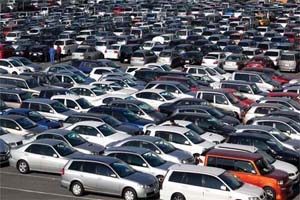
ECC slaps more taxes on car imports
The government on Jan 5 imposed regulatory duty upto 50% on all types of imported vehicles, leaving consumers at the mercy of local assemblers. The Economic Coordination Committee (ECC) of the cabinet that took these decisions also approved a subsidy of Rs40 billion for the rich industrial consumers by subsidising the imported re-gasified liquefied natural gas (RLNG). The government is taxing the poor and middle class to subsidise the rich. In the mini-budget, it imposed Rs375 billion worth of taxes but exempted Real Estate Investment Trusts from 15% income tax. The ECC approved the imposition of 10% regulatory duty on import of completely built units (CBUs) of electric vehicles battery packs of over 50 KWH excluding commercial buses and trucks. Giving in to the pressure from local car assemblers, the government has started discouraging the use of electric vehicles while the rest of the world is doing the opposite. Last week, the government proposed to slap 17% sales tax on electric vehicles. The ECC also approved an increase in regulatory duty from 15% to 50% on import of all types of hybrid vehicles in CBU condition having engine capacity of over 1,500cc but not more than 1,800cc. There is an increase of 233% in the regulatory duty rates. All other taxes are in addition to this. The ECC approved an increase in regulatory duty from 15% to 50% on import of vehicles having spark/ compression ignition engine (conventional engines) in CBU condition exceeding 850cc engine capacity but not more than 1,800cc. The government has said that regulatory duties have been imposed to control the import bill, which has been on the rise partially because of import of cars. The country imported 26,000 cars during the first five and a half months of current fiscal year. However, the decision to increase taxes will reverse the relief given by Prime Minister Imran Khan to the automobile sector in June 2021.
|
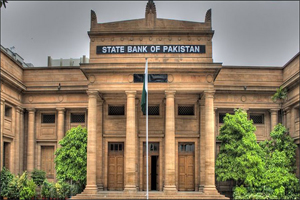
Exporters told to bring back proceeds in 120 days
The State Bank of Pakistan (SBP) now requires exporters to bring proceeds back to the country within 120 days instead of 180 days — a decision exporters believe is unworkable. In a statement issued, the SBP said it has amended foreign exchange regulations under which exporters would be required to bring proceeds back to the country within a maximum of 120 days from the date of shipment. Earlier, the exporters were required to bring their proceeds within 180 days. “The new measure is expected to positively impact foreign exchange inflows in the market,” the SBP said, adding that “a flexible exchange rate has appropriately played its role as a shock-absorber and it is important that its role be complemented by strong exports proceed realisation.” The move brought Pakistan’s regulations closer to international best practices, it said. However, exporters say the new limit is not workable. “Exporters make deals with importers on various modes of payments. It can be in cash, advance payments and sometimes in the form of loans or late payments,” said Pakistan Apparel Forum chairman. He said the decision was announced without taking the exporters on board. The government and the State Bank have stepped it up to hold the foreign exchange tightly in their hands in the face of a large import bill and current account deficit. Several measures have been taken during the current fiscal year to restrict the outflow of dollars from the country.
|
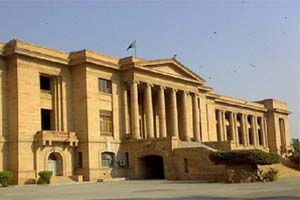
Sindh High Court allows import of LNG without infrastructure cess
The Sindh High Court (SHC) restrained the provincial tax authorities from taking any coercive action against the state-run Pakistan LNG Limited (PLL) and allowed it to clear the LNG consignment without demanding infrastructure cess. However, the two-judge bench directed the PLL to furnish a bank guarantee equivalent to the differential amount to the nazir of SHC. The bench also issued notices to Sindh’s secretary of excise and taxation department, director general and other officials of the department in Sindh as well as the advocate general for Sindh for the next hearing. Sindh excise department barred from action against PLL; petitioner seeks return of over Rs8bn The PLL had through its counsel petitioned the SHC and submitted that the petitioner was a state-owned entity dealing, inter alia, in the import of liquefied natural gas (LNG) and onward sale of re-gasified LNG (RLNG). The lawyer for petitioner contended that the respondents were unlawfully levying cess in violation of Section 3 of the Sindh Development and Maintenance of Infrastructure Cess Act, 2017 and their inaction to forward returning the same has materially affected the fundamental rights of the petitioner to conduct lawful trade and business in violation of Article 18 of the Constitution.
|
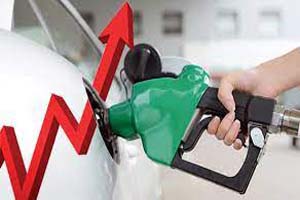
Govt raises petrol, high speed diesel prices by Rs4
The government increased the prices of petrol and high speed diesel (HSD) by Rs4 per litre, according to a statement issued by the Finance Division late on Friday (31.12.21). The statement said the new prices will be effective from January 1. "In the fortnightly review of petroleum products prices, Prime Minister has rejected the proposal of Ogra (Oil and Gas Regulatory Authority) for an increase in prices of petroleum products and advised to increase only Rs4 per litre to meet the petroleum levy target agreed with the IMF (International Monetary Fund)," the statement read. The Rs4 increase in the price of petrol is part of a commitment made by the government under an agreement with the IMF for a net fiscal adjustment of almost Rs550 billion during the remaining part of the current fiscal year.
|
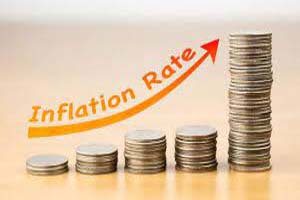
Pakistan records highest inflation in 22 months
Pakistan continues to witness an upward swing in consumer prices as inflation in Pakistan skyrocketed to 12.3% in December 2021 – the fastest pace in 22 months. According to Pakistan Bureau of Statistics (PBS), the Consumer Price Index (CPI) based monthly inflation increased by 12.28% on year-on-year (YoY) basis during the month of December 2021 against the corresponding month of last year. The average CPI-based inflation rate during the period July-December 2021-22 over same period of the preceding year was recorded at 9.81%. On month-on-month (MoM) basis, it declined by 0.02% when compared to previous month (November), according to PBS data. According to breakup figures of PBS, the Urban CPI recorded an increase of 12.74% on year-on-year basis while it was increased by 0.3% on month-on-month basis. On the other hand, the CPI inflation Rural, increased by 11.61% on year-on-year basis in December 2021 as compared to same month of the preceding year. On month-on-month basis, it declined by 0.5% in December 2021 as compared to November, 2021.
|

Trade deficit doubles to $24.78 billion, but import growth shows signs of slowing
Pakistan's trade deficit is currently up nearly 100% at $24.78 billion so far in fiscal year 2021-22, from $12.36 billion in the previous fiscal year's corresponding half, provisional data indicates. According to the most recent official numbers on external trade, the trade imbalance in December 2021 alone increased by 57% to $4.1 billion from $2.6 billion in the same month last year. However, it also bears mentioning that the monthly deficit was down 18% compared to November's reading. According to the Ministry of Commerce, early signs indicate that import growth has slowed. "Imports declined to $6.9 billion in December 2021 from $7.9 billion in November 2021, a decrease of $1 billion," the ministry said, adding that the target for December 2021 imports had been $6.2 billion. Imports were up 37.9% year-on-year to $6.9 billion from $5.005 billion in December 2020. Meanwhile, Pakistan's exports rose 16.7% to $2.761 billion in December 2021, up from $2.366 billion in the same month last year, an almost $400 million gain, according to data. Exports have climbed by 25% to $15.125 billion in the first half of the current fiscal year, up from $12.11 billion in July-December 2020. The export target was $15 billion for the period. The persistent expansion in the trade deficit has been caused by a substantial increase in import costs, which might push the current account deficit above $10 billion. In FY18, the trade deficit had reached an all-time high of $37.7 billion. Government measures, however, resulted in a decrease to $31.8 billion in FY19 and $23.183 billion in FY20. The trend reversed in FY21, with the trade deficit again expanding to $30.796 billion.
|

SBP plans to issue five digital banking licences
The State Bank of Pakistan (SBP) plans to issue up to five licenses for setting up digital banks in the country offering digital retail and digital full banking on a lower capital requirement, the central bank said. “In line with international best practices and assessment of the overall banking situation in Pakistan, SBP has decided to initially issue up to five (5) digital banks’ licences, which essentially means that SBP is looking to attract players with a strong value proposition, a robust technological infrastructure, sufficient financial strength, technical expertise, and effective risk management culture,” it said in a statement. The applicant could apply for licenses to set up digital banks till March 31, 2022. The SBP would grant two types of digital bank licences: Digital Retail Bank (DRB); and, Digital Full Bank (DFB). DRBs would primarily focus on retail customers, while DFBs would deal with retail customers as well as business and corporate entities. For DRBs, the minimum capital requirement has been set at Rs1.5 billion during the pilot phase that would gradually increase to Rs4 billion over a transition period of three years, it said. Subsequent to completion of transition phase, and subject to fulfilment of minimum capital requirement and completion of a two years progression phase, DRBs would be allowed to graduate to receive a license of a DFB, it added. The SBP expects a few digital banks to be operational in the course of 2022, and was confident that these banks would play an important role in an inclusive and efficient expansion of the financial ecosystem in Pakistan.
|
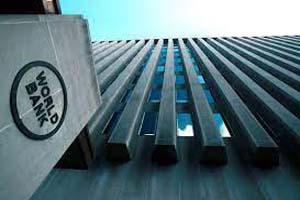
WB surprised by Pakistan improvement
World Bank report released say growth in Pakistan surprised on the upside last year, supported by improving domestic demand, record-high remittance inflows, a narrow targeting of lockdowns, and accommodative monetary policy. The bank’s Global Economic Prospects report 2022 projects that growth in the South Asian region (SAR) will accelerate to 7.6 percent in 2022, as pandemic-related disruptions fade, before slowing to 6.0 percent in 2023. The World Bank has revised growth projections for the region since June 2021, because of “better prospects in Bangladesh, India and Pakistan.” The report projects that Pakistan’s economy will grow by 3.4 percent in the current fiscal and at 4 percent in 2022-23, benefiting from structural reforms enhancing export competitiveness and improving the financial viability of the power sector. It also estimates India’s economic growth to be 8.3 percent in the current fiscal year and 8.7 percent in 2022-23. The 8.3 percent GDP growth for the current fiscal year is the same as what the bank projected in October 2021. The report notes that India’s growth rate in the current and next fiscal years will be stronger than those of its immediate neighbors. The bank predicts Bangladesh’s growth at 6.4 and 6.9 percent in 2021-22 and 2022-23, respectively, while Nepal’s is to grow at 3.9 percent this fiscal and at 4.7 percent in the next.
|
|

© 2022 Alpine Marine Services Private Limited
all rights reserved
|
|
|